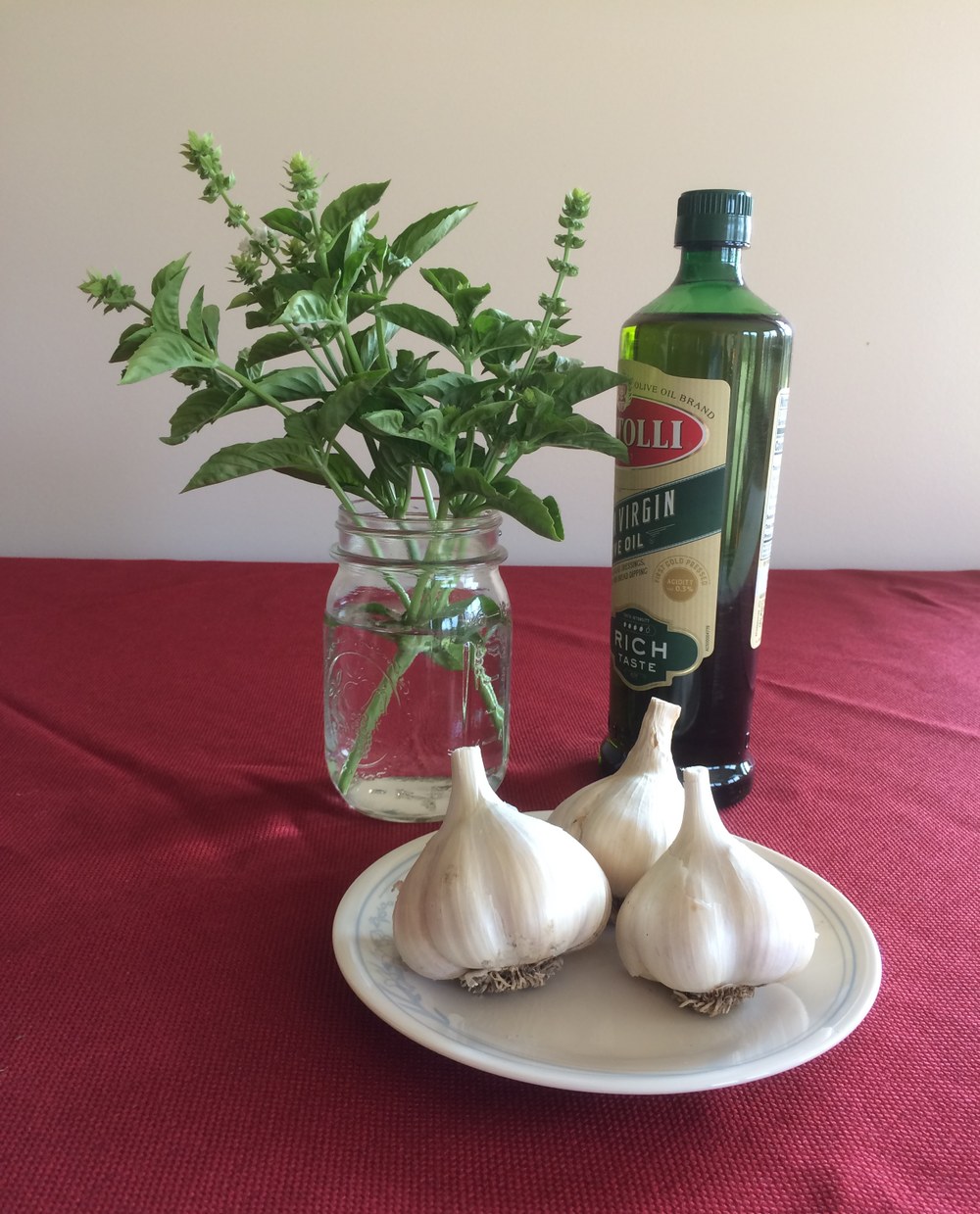Posted: August 3, 2021
Tomatoes! Zucchinis! Beans! And sweating like crazy while picking them, watering them, and weeding around them! This is a busy time for vegetable gardeners.

Fall planted garlic yields a savory summer harvest. Photo by Debby Luquette
Here's a cool thought: It's time to start your fall garden -- time to plant the last carrots and beets. If you are ready with an emergency frost cover, there's time for one more planting of fast maturing bush beans. Good cool season veggies include rutabagas, Chinese cabbage, Pak choi, collards and broccoli, as well as quick maturing dill and cilantro. Fast growing, heat sensitive plants - spinach, lettuce, and turnips - can wait until the end of August.
Two other fall vegetables that take more time are Brussels sprouts and parsnips, both of them taking up to four months. They should be planted early in July. A late planting sometimes works since both handle freezing temperatures well and their taste improves with exposure to freezing.
How do you know when to plant these vegetables? Look up the days to maturity for each vegetable and each variety; it's usually provided on the seed packet and in the seed catalog. And take note: even within one vegetable, the dates to maturity can vary widely. Take, for instance, these two carrot varieties: Romance is listed as 75 days and Speedo is listed as 65 days. Since daylight is diminishing after the summer solstice, add a week or more to account for the reduction in daylight. Then count back from the expected first frost date (10/11 - 10/20) for sensitive plants, later for plants that tolerate temperatures to 28oF or below.
If you want to look for the tolerances of specific plants, check the cold hardiness tables online. Two reliable sources are:
Both of these originate in Virginia.
Once you decide to try fall planting, what else do you need to know? It is necessary to consider soil temperatures for best germination for each plant when planting seeds for a fall garden. Many seed packets and seed catalogs give you information about the temperature range that seeds need to germinate. The best germination occurs near the middle of the range and falls off toward the extremes. For example, soil temperature for beet germination is 50o-75oF, but soil temperatures over 70oF have poor germination. Hot soil is not a friend of gardeners!
By early July I'm usually watching the 10-day forecasts with an eye toward a cool snap - days in the 70s and nights in the low 60s or below. Before the cool weather arrives I prepare the beds - weeding, loosening the top few inches of soil, and raking it smooth. I only till if necessary because there's a lot of life occurring in that soil. When the cooler weather hits I'm ready to plant and to water with cool well water. Even if you have dark-colored rain barrels, try to use cool water to get the soil temperature down to help germination. These midsummer cool spells usually don't last very long, so frequent watering is essential when rain is in short supply.
Be ready with some sort of shading strategy. The same row covers I use to keep the inevitable insect pests off the fall garden also provide shade. Deterring insects is important for late-season gardens since many of the pests are on their second or third generation.
There are vegetables I plant in the fall specifically for spring harvest. Most of Adams County is in Hardiness Zone 6b, telling me that -5o to 0oF is likely to be as cold as it gets. Broad-leaved spinach and kales (Siberian, Russian, Vates varieties) make it through the winter with no protection. The above-ground part of the plant often freezes, but not the roots. They continue growing again when the soil warms in late February or early March, providing an early harvest of greens. They also bolt quickly in the spring, so be ready to replace them with another planting when you start again the following year.
Garlic and shallots are best planted in early October and allowed to winter over. When I plant them, I pick an area of the garden that drains well and add a bit of organic matter to help loosen my heavy clay soil. One important addition for these two alliums is a covering of mulch to prevent these bulbs from being pushed out of the ground by freeze-thaw cycles -- a common feature of our winters. The best mulches are shredded leaves and/or straw, but landscaping mulch works in a pinch. The garlic and shallots start to show a bit of green before winter finally sets in and stays in this suspended development until the soil warms in spring.
Gardening is an activity that allows many chances for experimentation and extending the gardening season is one of my favorite challenges. Frosty fall carrots, broccoli, Brussels sprouts, and other cool season veggies are great and I'm always willing to try something different. Give it a try.
Debby Luquette is a Penn State Master Gardener from Adams County. Penn State Cooperative Extension of Adams County is located at 670 Old Harrisburg Road, Suite 204, Gettysburg, phone 334-6271.
Monday Videos: Visit us on Facebook at Penn State Master Gardeners in Adams County for our Master Gardeners' Monday Videos. Timely and relevant topics will be discussed on a weekly basis keeping readers up to date on current horticultural issues.
Hotline: Master Gardener Hotline is open April through September Mondays, Wednesdays, and Fridays from 10am - 2pm. Please send an email (with pictures if possible) to adamsmg@psu.edu with your gardening questions or call 717-334-6271 during hotline hours

